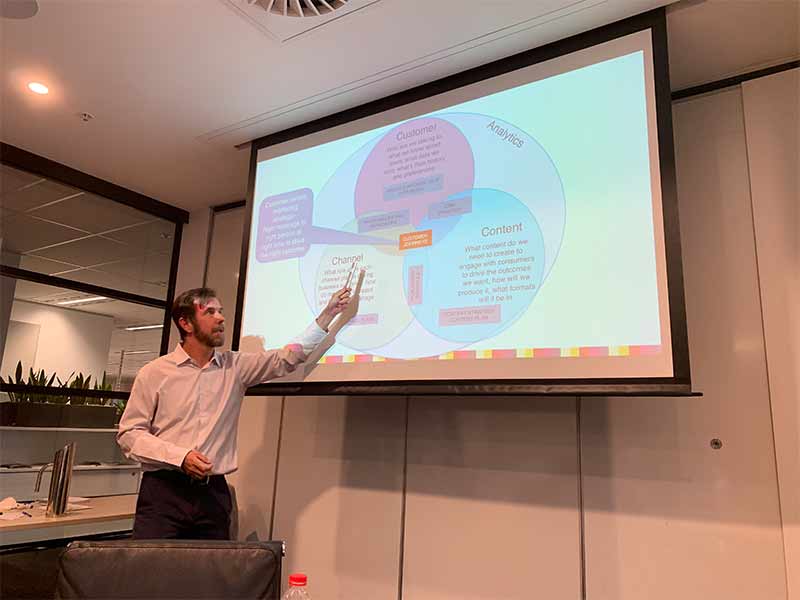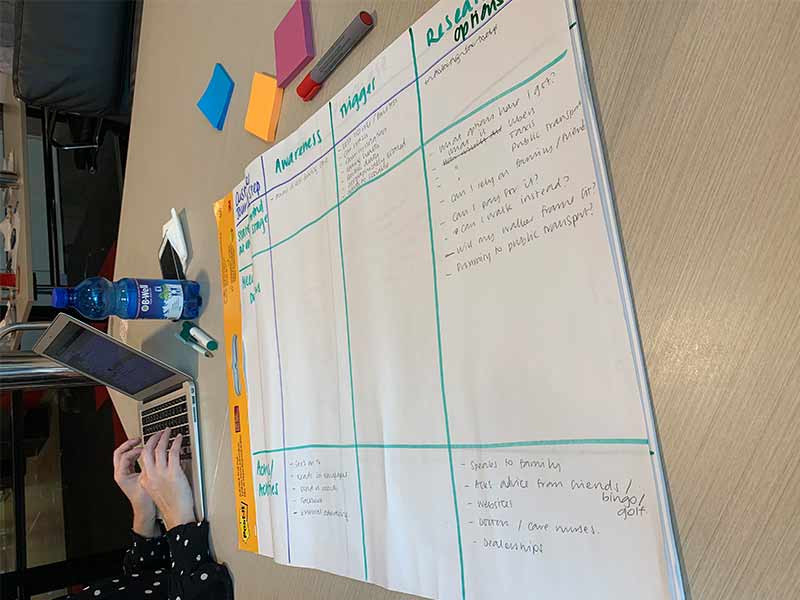On 13th March 2019 I attended the ADMA Customer Journey Mapping Course in Sydney.
I’ve had my eyes on this course for the last year, researching whether it was the right course to advance and accelerate my career at Salesforce. I’m going to elaborate on my situation before taking the course to give you some context and insight into my decision making.
Why Customer Journey Mapping
My role as a Campaign Manager has changed over time due to advances in technology, and so too has consumer expectation. There is a disconnect between what brands think their customers need, and what their customers actually want. I refer to this as “the gap”.
Consumers increasingly expect brands to communicate with them in a contextually relevant and personalised way.
I’ve found my clients value my technical knowledge of the Salesforce Marketing Cloud platform but they also expect me to have general marketing and industry experience to help them overcome this gap.
My clients value my input and the results of the solutions I helped implement, however I felt it would be helpful to step away from technology and understand more about customer journey mapping.

About ADMA
If you’re not familiar with ADMA, they’re the largest marketing and advertising association in Australia. They’re a leading educator and resource for effective, data-driven marketing across all channels and platforms. They provide a range of courses that cover customer journey mapping, content, analytics, data, and of course privacy and compliance.
I was comfortable with selecting ADMA as my first choice of education provider having spoken to colleagues and friends who had taken some of their digital marketing courses.
Here is what you can expect to learn from the ADMA Customer Journey Mapping course:
- What is customer journey mapping and why it is important
- How customer journeys have changed over time
- Different types of journeys and where they are most effective
- How to identify and understand customer audiences
- How to map a customer journey
- Tools to calculate ROI
About the lecturer, Mike Zeederberg
Mike Zeederberg has over 20 years of digital marketing experience, and a wealth of experience with different industry verticals. He is Managing Director at Zuni, and has worked with some of Australia’s leading brands such as Australia Post, Lendlease and Macquarie Bank.
I valued his ability to not only explain the theory but also make it relevant to different industries. He also pushed the class to think creatively, beyond their comfort zone.

4 key takeaways from the course:
- It’s important to identify both segments, and personas. This gives you the power to personalise your message based on your customer persona, and plan your communication channels and customer journey based on their behaviour and key data attributes.
- It’s critical to understand the pain points in the whole customer lifecycle journey. Where are customers dropping off, and why? How can we remove friction points, and improve their customer experience? To do this effectively you need to have all departments that have an interaction with the customer to collaborate and share their insights.
- Touch-point journeys and customer journeys are significantly different. A “touch-point” is a single communication, at a point in time via a specific channel. It is one piece of the whole customer journey.
- Continue to test and learn, validate and optimise. What works now may be different in a year.
Further details about Customer Journey Mapping course
Course duration: 1 day; 9am to 5pm; morning/afternoon tea and lunch provided.
Who should take the course:
- Individuals who want a deeper understanding of customer journeys and how they can transform how their brand serves its customers
- Marketing Managers who want to shift the way they communicate with their customers
- Product Managers who want to understand how to evolve their current purchase journey to be more holistic
Pros:
- As an instructor-led course it provides the opportunity to ask questions and improve your understanding of the materials
- Mike has experience across vertical industries and is able to provide relevant examples for attendees. He asks each student before the class their role, the company they work for and what they hope to achieve from the class, and utilises this information to tailor the information to each individual’s requirements and experience.
- Fortunately Mike covers all venues for this course (Sydney, Melbourne, Brisbane and Perth). So if you’re attending in another state, you will have the same experience.
- Mike pushes your creative thinking, and shares inspirational case studies to help spark your creativity
- Being a classroom-based course gives students the ability to share their business challenges. This also provides a safe and collaborative environment for students to identify the right solution for their business.
- All content is available for students to download after the course
- You leave with step-by-step instructions on how to build a customer journey, along with a real-life example ADMA recently implemented in their business
- Opportunity to network and collaborate with like-minded individuals
- You walk away feeling inspired. Not only did I have a new methodology to incorporate with my clients, it also sparked ideas for how we could improve our own customer experience.
Cons:
- It’s not an online course, and therefore only available to Australian residents in Sydney, Melbourne, Brisbane and Perth
- It only runs every few months, so you need to plan in advance
- At AUD $650 – $895, it’s not cheap (*$650 for ADMA members, and $895 for non-members)
- The course could easily have been two days. We were given a task to build our own customer journey maps in the afternoon, and it felt rushed. I would have preferred to have a full day to work on this, with the opportunity for Mike to critique and provide constructive feedback.
- Unfortunately the class started late due to attendees arriving late, which meant we were a bit rushed to finish everything
- ADMA provided food for the day, and they were considerate in addressing attendee’s different dietary requirements. However I am not a fan of sandwiches and pastries, and should have taken my own healthy food.

Overall I left the course feeling very inspired. It changed my understanding of customer journey planning, without being technology-centric, and helped me to reevaluate how I consult with my clients. I am conducting a lunch and learn session with my colleagues to share my learnings and explore how we could apply some of these learnings.
This is not a paid promotion, and I did not get any commission or financial benefit from ADMA, and is purely based on my experience.


